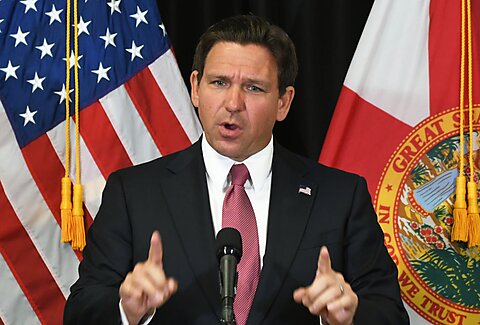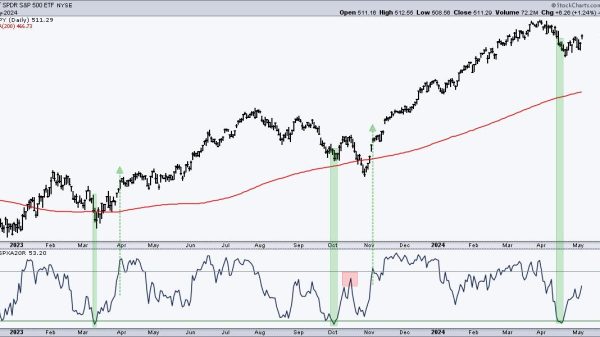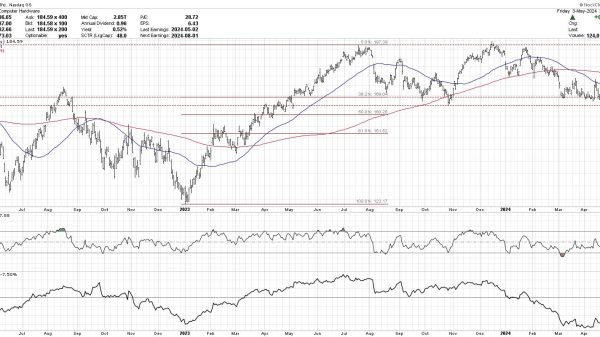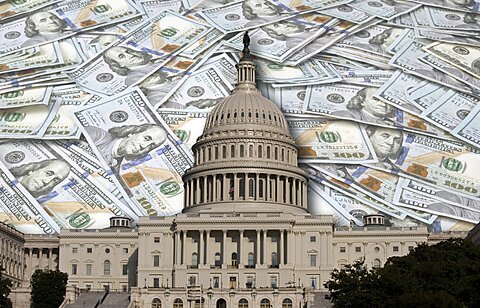Americans in ten states currently pay top tax rates above 49 percent, which is likely above the revenue‐maximizing tax rate. Under President Biden’s proposed tax increases, almost three‐quarters of the states would face top combined federal, state, and local tax rates above 49 percent.
Tax rates affect people’s decisions about how much to work and invest. The effects are often greatest for the highest‐income individuals because they are able to change their behavior the most.
Under the progressive tax rate system, additional income earned over certain income thresholds is subject to higher tax rates, ranging from 10 percent to 37 percent. The highest‐paid Americans are charged a federal marginal income tax rate of 37 percent on each dollar earned above $731,200 (married) in 2024. The average top rate increases to 46 percent after factoring in state, local, and Medicare taxes.
When the government takes close to half of each additional dollar earned, it changes an individual’s decisions about how much to work and what type of work to do. There are at least four ways high tax rates decrease economic activity.
- Hours worked. High taxes reduce the return to additional work, deterring people from putting in the long hours often associated with high‐paying jobs. A doctor may choose to see fewer patients in a day, or a lawyer might bill fewer hours.
- Labor force participation. Retirement‐age workers and second earners (spouses) can opt not to work at all if their after‐tax income doesn’t justify the effort. High labor taxes can also incentivize young people to delay labor force participation.
- Human capital. The incentive to invest in additional years of education and training decreases when the resulting reward (high pay) is reduced by high taxes. A young doctor may not choose to spend additional years developing a technical specialty in surgery or research if he only gets to keep 40 or 50 cents of every additional dollar he will earn.
- Entrepreneurship. High taxes diminish the returns to starting or expanding businesses. Business start‐ups are risky (most fail), and the high earnings of founders and executives compensate for long hours, specialized skills, and the risk of failure. High wage taxes reduce entrepreneurship and business growth.
A fifth effect of high tax rates is avoidance. Individuals can move to regions with lower taxes, maximize credits and deductions, and shift income toward types of activities that are taxed at lower rates.
The academic literature summarizes these effects—often just the first two direct labor force effects and avoidance—by estimating an “elasticity of taxable income.”[1] The bigger the elasticity of taxable income, the more economic damage (deadweight loss) is caused by the tax.
Using a simple but flawed formula, academics translate estimated elasticities into a revenue‐maximizing tax rate.[2] This is the top of the Laffer Curve where the economic damage from the tax increase is so large the higher tax rate raises no additional revenue.
Estimating a revenue‐maximizing rate can lead researchers to incorrectly imply that the revenue‐maximizing tax rate is economically or socially “optimal.” Even below the revenue‐maximizing point, tax increases explicitly trade off fewer work hours, less entrepreneurship, and a smaller economy for exponentially decreasing revenue gains.
The Revenue Maximizing Rate
The academic literature includes a range of estimates of the elasticity of taxable income. A widely cited 2011 article by Peter Diamond and Emmanuel Saez claimed that the mid‐range elasticity estimate is 0.25, implying a revenue‐maximizing top tax rate of 73 percent. Their relatively low elasticity (and high top tax rate) has been widely disputed, especially as applied to the highest‐income earners.
A recent paper by Joshua Rauh and Ryan Shyu in the American Economic Journal: Economic Policy finds an elasticity of 2.5 to 3.2 for California taxpayers facing some of the highest marginal tax rates in the United States. Alan Reynolds’s 2019 review for the Cato Journal concluded that the elasticity for high‐income taxpayers is at least 0.8 and likely higher. The average elasticity reported in eleven studies surveyed by Aparna Mathur, Sita Slavov, and Michael Strain is about 0.7.[3] In 2004, Saez found a similar 0.7 mid‐point estimate for the top 1 percent.
Using the same method as Diamond and Saez (and accepting its deficiencies), a 0.7 elasticity of taxable income implies an upper bound revenue‐maximizing rate of 49 percent. This is the same result reported in a 2020 Economic Journal article using a different model that incorporates human capital accumulation. Using other plausible parameters, the top rate could be as low as 25 percent and is most likely between 35 percent and 40 percent.[4]
Under current law, the top marginal federal income tax rate is almost 41 percent after accounting for Medicare taxes. In 2024, state income taxes range from 2.5 percent (Arizona and North Dakota) to 14.4 percent (California).[5] Nine states have no individual income tax. The Tax Foundation reports local income taxes in 2023 for the largest local taxing jurisdiction, which range from 0.085 percent (Des Moines, Iowa) to 4 percent (Portland, Oregon) across 13 states.
Figure 1 shows that across the 50 states and DC, combined federal‐state‐local top marginal income tax rates range from 41 percent in states with no income tax to more than 55 percent in California and New York City. Under current law, combined top income tax rates exceed 49 percent in 10 states.
Figure 2 shows that under President Biden’s proposed 39.6 percent top income tax rate and 2.1 percent Medicare surtax, combined income tax rates would exceed 49 percent in 36 states and DC. California’s highest rate in the nation would be 59 percent.
While not explicitly called for in the president’s budget, many prominent Democrats have also proposed removing the Social Security payroll tax cap (wages subject to the current 12.4 percent tax are capped at $168,600 in 2024). Uncapping the Social Security tax would be a large marginal tax rate increase on high‐income earners. Combined with Biden’s other tax increases, an uncapped Social Security tax would subject high‐income taxpayers in every state to tax rates above 49 percent, with top income tax rates ranging from 57 percent to 71 percent.
Conclusion
Taxes on wages make individuals worse off by directly reducing their take‐home pay and disincentivizing additional market work. High tax rates on the most productive Americans also have negative economic consequences for the millions of Americans who benefit from the goods, services, and jobs supported by high‐paying jobs. These occupations often demand long hours, years of additional schooling, continuing education, and risk‐taking, which are directly disincentivized by high marginal tax rates.
When considering revenue‐maximizing tax rates, it’s worth ending with Milton Freidman’s observation that “if a tax cut increases government revenues, you haven’t cut taxes enough.” In other words, the optimal tax rate is far below the top of the Laffer Curve. Policymakers should keep tax rates as low as possible for all Americans, regardless of income level.
[1] If the elasticity of taxable income is 0.7, then a 10 percent change in the tax rate causes reported income to fall by 7 percent.
[2] Revenue maximizing tax rate, t*= 1/(1+p x e), where p is a Pareto parameter describing the income distribution and e is the elasticity of taxable income. Diamond and Saez assume p is 1.5, which likely biases up their estimate of t*.
[3] Average calculated by Alan Reynolds.
[4] 25 percent rate assumes an elasticity of 2.5 and a Pareto parameter of 1.2.
[5] California rate includes a 1.1 percent state payroll tax.






























